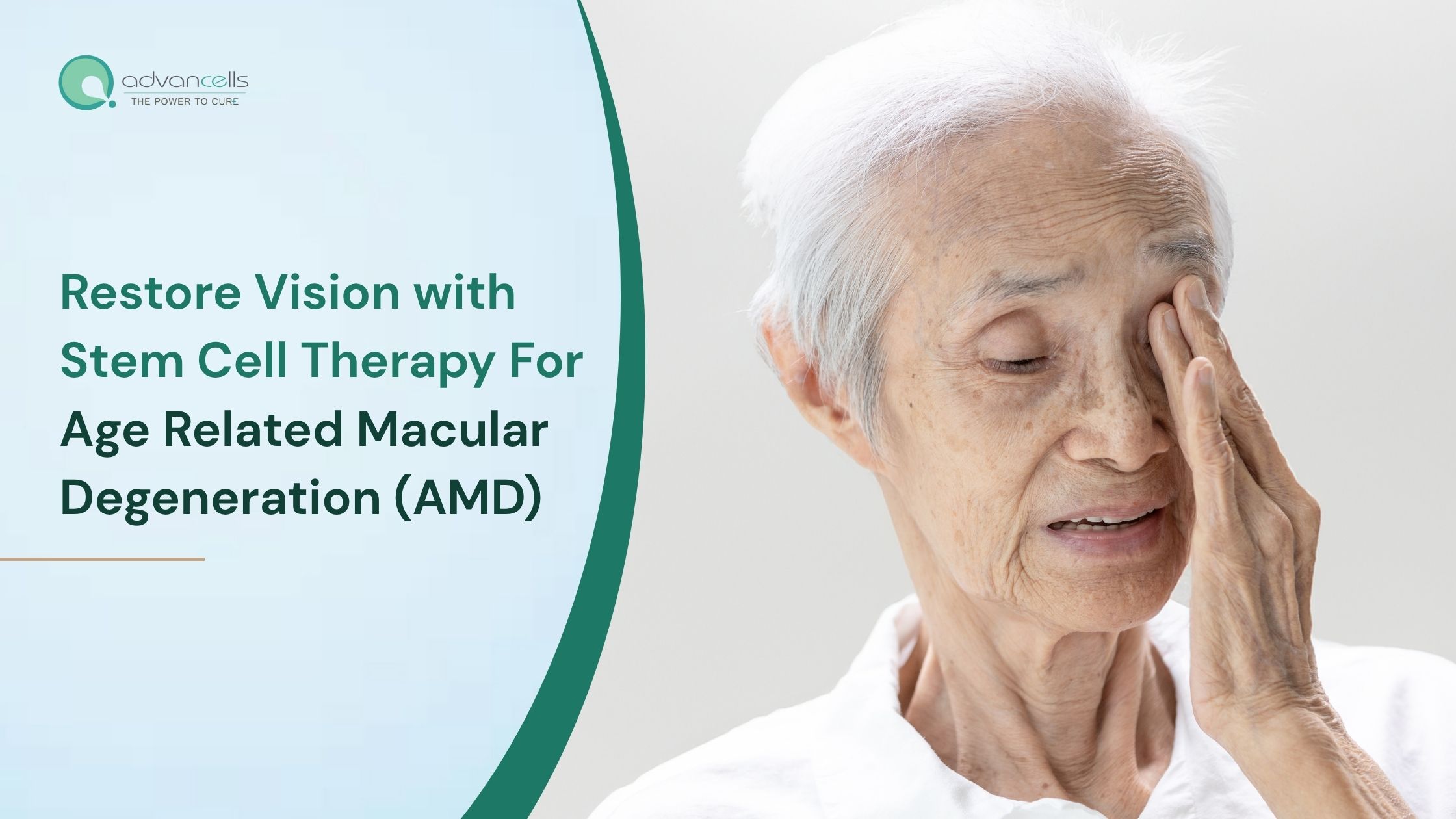Retina is the layer in the eye responsible for receiving light signals and converting them into nerve transmissions to be carried to the brain to form a visual representation. This layer contains a region named macula, which enables central vision. Age-related macular degeneration (AMD) is a disorder that leads to thinning of the macula, resulting in vision loss. It accounts for about 8.7% of incidences of blindness.
Dry AMD begins with the accumulation of deposits or drusen in the eye, which triggers inflammation and oxidative stress. The growing size of deposits disrupts the blood supply to the macula. At a late stage, the damage becomes irreparable and progresses to wet AMD. The abnormal vessel formation in wet AMD leaks fluid into the organ, detaching retinal pigment epithelium and forming scar tissue. Current treatment modalities target the vessel growth and prevent progression of the disease through lifestyle management. Stem cell therapy is considered a potential AMD treatment.
Stem Cell Therapy For Age-Related Macular Degeneration
Stem cells have remarkable regenerative potential, which is applicable in repairing damage. Mesenchymal stem cells (MSCs) are a type of stem cell that can regenerate tissue and modulate the tissue microenvironment to activate the tissue’s inherent healing. Their easy availability from multiple sources and painless extraction procedures have promoted their use for therapeutic purposes. MSCs work in the following ways to treat AMD:
Anti-inflammation: MSCs increase the secretion of anti-inflammatory cytokines while decreasing the levels of pro-inflammatory cytokines. It alleviates chronic inflammation- a key pathway associated with AMD.
Antioxidant: MSCs can home to the damaged site and protect the retinal cells from oxidative damage.
Neuroprotection: MSCs also release growth factors such as brain-derived neurotrophic factor (BDNF), nerve growth factor (NGF), and glial-derived neurotrophic factor (GDNF). These factors protect nerve cells from injury and prolong their survival, thereby allowing nerve signal transmission.
Angiogenesis: MSCs also secrete vascular endothelial growth factor (VEGF) that repair blood vessels and stimulate their formation, thus ensuring optimal blood supply to eyes.
Scientific Studies
The promising potential of MSCs has promoted their use in several disorders. Therefore, scientists have evaluated the therapy in AMD. They transplanted MSCs into the eyes of animal models for AMD by intravitreal or subretinal routes. The treatment resulted in reduced retinal damage, improvement in visual capacity, and protected the retinal from deterioration.
A single blind phase I/II clinical trial tested the MSC therapy in dry AMD patients and demonstrated modest but significant improvement in visual acuity. The trial also showed that no adverse complications resulted from the treatment.
To maximize the potential of MSCs, scientists are exploring another frontier. They are transforming MSCs into retinal cells for transplantation to promote their integration into retinal layers and functional recovery.
Challenges
Stem cell therapy for AMD has not earned approval yet due to a few challenges. Addressing them will accelerate their clinical translation.
Administration Route: Two administration routes- subretinal and intravitreal- have been established for stem cell treatment. The optimization of these routes can maximize the effectiveness of the therapy.
Treatment Protocol: A standard treatment protocol is vital for clinical practice. Clinical trials have not yet defined the appropriate dosage, number of sessions, and interval between sessions impeding their use.
Source of MSCs: Clinical trials use different sources of MSCs, which makes selecting a suitable source challenging.
Advances in Regenerative Medicine
The efficacy of stem cell treatment has stimulated scientists to dive deeper. The past decade has seen the growing applications of MSC-exosomes. These are vesicles that contain biomolecules such as growth factors, proteins, RNAs, cytokines, etc. MSCs release them to communicate with nearby cells. Studies have shown that these exosomes bear the properties of MSCs and exert similar effects in a cell-free manner. They also offer the advantage of generating an off-the-shelf therapy. Exosomes have been employed in different disorders, but their potential needs to be explored in AMD.
Gene therapy is another approach that is under investigation. It uses gene editing to increase the potential of MSCs. For instance, increased expression of VEGF and Bcl-2 in MSCs by genetic engineering enhanced MSC survival. Similarly, overexpression of neurotrophic factors in MSCs also boosted their neuroprotective capacity. Such efforts will improve the stem cell treatment for eye disorders.
Conclusion
Stem cell therapy is a potential alternative for AMD treatment. Its ability to regenerate has been used to treat a variety of illnesses with positive results. Mesenchymal stem cells (MSCs) have exhibited therapeutic properties such as anti-inflammation, angiogenesis, cell regeneration, and antioxidant properties that can prove beneficial in AMD due to their related mechanisms. Therefore, stem cells were employed for AMD treatment. The initial studies have shown favorable outcomes but require additional research.
Clinical trials with large sample sizes and longer time periods will provide a better assessment of the therapy. Additionally, the treatment requires extensive standardization regarding administration route and dosage. Scientists are also exploring gene therapy and MSC-derived retinal cells to maximize the potential of the therapy. Advancells is nurturing the growth of stem cell therapy for eyes in India by delivering premium-quality stem cells.

